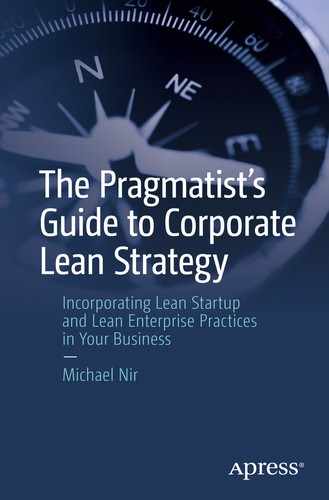Part IIILessons in Building a Corporate Startup
An Educational Company Story
In section two, I shared with you the ideal transformation, depicting a timeline and the realization of the methods over time. Most books we read end there; they offer the sterile synthesis of the best practice and share a success story or two. I feel this is missing the point. I subtitled section three as “the muddy waters of reality” since in truth things never turn out as planned. Even with the best intentions, transformations change. They both impact and are impacted by organizational realities.
Therefore, in the third section of this book, I share with you mini-stories of successes and failures of enterprise lean agile transformations. There are numerous successes and multiple war stories in the journeys to lean agility. None of these transformations is a complete success or an absolute failure and yet some achieved their original goals while others struggled or failed. As I describe these journeys, which are a mix of fiction and reality (although they sound very real because they describe repeatable behavior experienced by many individuals in multiple organizations but should not be compared to any companies and individuals), you will be able to clearly identify patterns and anti-patterns of an enterprise-level agile transformation.
While written as fiction and simplified for the purpose of this book, each of the following stories shares pragmatic advice and experience from the field of lean agile transformation, which you will be able to immediately apply to the area of your responsibility, to your company or business, and even to your family. Each journey is told through the eyes of a persona who is part of this transformation and each highlights one of the “must-haves” of a lean startup corporation. My intent in this section is to illustrate success and failure stories where best intentions meet reality and discuss what we can learn from them.
Tip
Define the mission.
Identify the customer personas.
Implement prototype MVP and program training.
Run experiments with customers to validate your hypotheses.
Pivot or persevere in a build-measure-learn cycle.
How are the five techniques progressing and changing along with the implementation timeline? Has the persona followed the suggested time spent on activities in the first 30 days, the first 90 days, and the first 12 months?
